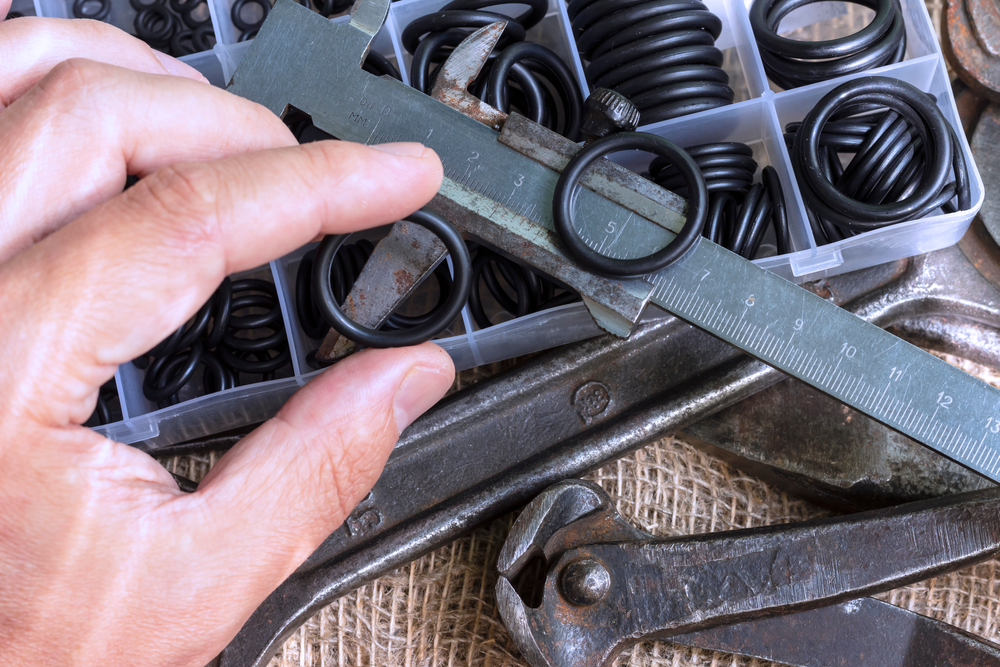O-rings are ubiquitous. Made from a type of elastomer, these seals are used in almost every industry, including aerospace, automotive, food and beverage, medical, oil, gas, petrochemicals and electronics.
For these and other industries, o-rings are crucial components of their devices and manufacturing environment because of their incredible properties. They can deform and create a strong barrier, blocking a path so that fluids or gas do not escape. Most o-rings can withstand high pressure, vibration and a wide range of temperatures, from very high to absolute zero. They are also made of materials that offer great resistance to chemicals, oils, gas and greases.
Let’s take a look at six unique uses for o-rings in different industries.
Aircraft
O-rings also play a key role in aircraft. They form a watertight seal to prevent external and internal leakages, including jet fuel leakage. However, not all o-ring materials are suitable for aircraft. Fluorocarbon o-rings must be considered for installation in an aircraft engine or other aircraft equipment. They are resistant to high temperatures, offer improved resistance to steam and can withstand fuels and gases.
Hydraulic Cylinders
Hydraulic cylinders, which are used in several marine and engineering applications, generate mechanical force in a linear motion. When installed in these cylinders, o-rings help contain the high-pressure fluids and prevent leaks. In addition to that, they also ensure that debris and liquids do not get inside hydraulic applications. O-rings made of nitrile rubber (NBR) are the most common seals used in hydraulic cylinders.
Mechanical Keyboards
O-rings help eliminate the noise made by mechanical keyboards. When installed under the keys, they act as shock absorbers and dampen the hit of keys on the keyboard. O-rings, however, have to be made of the right material to ensure that keyboards do not ruin gaming or the typing experience of users. Also, factors such as thickness and durometer need to be considered when selecting o-rings for the keyboard. Rubber and silicone o-rings are best for keyboards.
Dental Implant
With the help of o-rings, weaker dental implant abutment (the metal part that serves as a base for the crown) can be protected. As stud attachments, they improve the retention of implant and stability of partial overdentures. O-rings used in dental implants are usually made of biomedical silicone.
Brewing System
O-rings are an essential component of a brewing system. They are used in brewing equipment, dip tubes, beer kegs, faucets, pumps and bottle fillers, and help to transport the beer from the casket to the tap. Silicone o-rings are suitable for brewing systems. They are FDA-grade o-rings or food-grade o-rings, which means they are non-toxic, non-marking, non-allergenic and resistant to bacteria and chemicals.
Scuba Gear
For scuba divers, o-rings are a critical part of their life-saving equipment, including scuba tanks/diving cylinders, scuba regulators and underwater lights. In order to access the air supply from the tank, which is the breathing apparatus of the scuba diver, a regulator has to be attached to the tank’s valve. An o-ring forms an airtight seal between the valve and regulator so that no air escapes from the tank. It also prevents the water from entering the tank. Halocarbon o-rings are appropriate for scuba tanks.
Choose Right Material O-Rings
All industries do not use the same applications; hence, their o-ring criteria vary. Some industries need o-rings that perform in high-pressure conditions, while others need them to perform in absolute zero temperature. For an o-ring to work effectively in a specific environment, it has to be made of the right material. Choose the one that is most compatible for your application.




